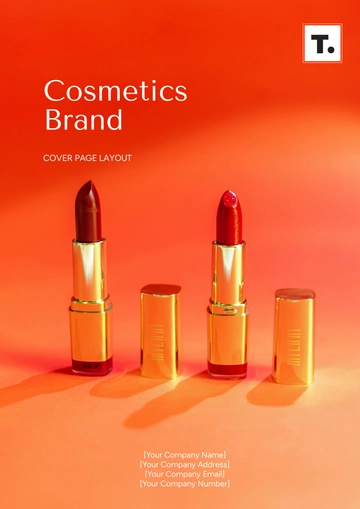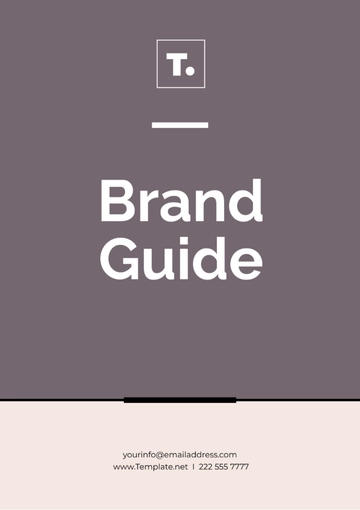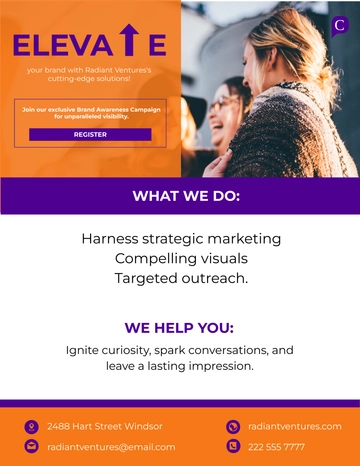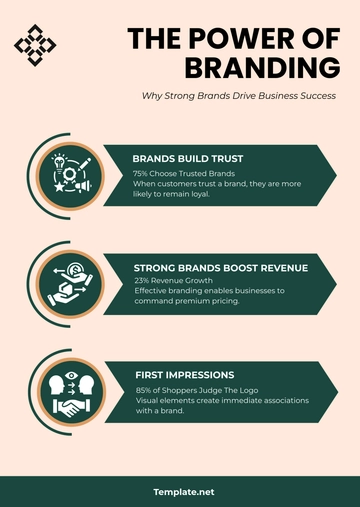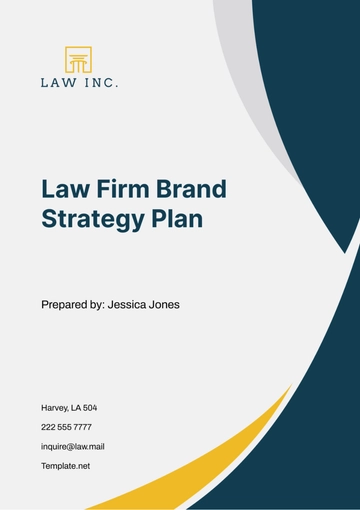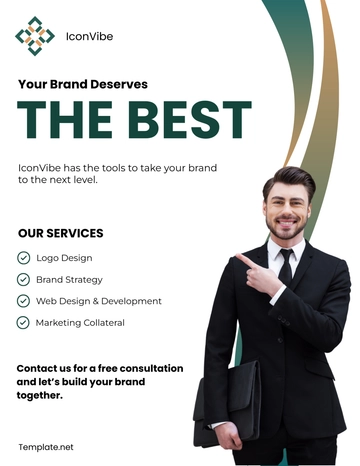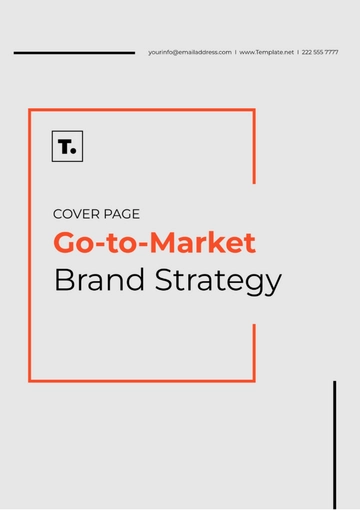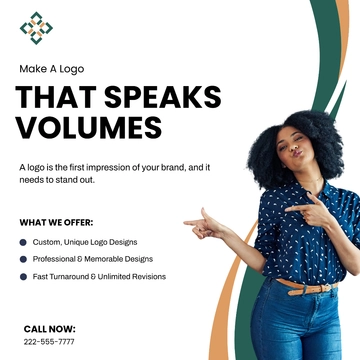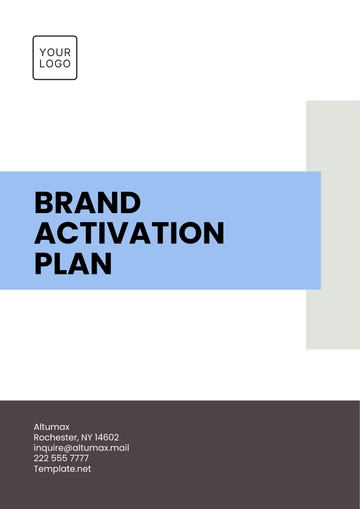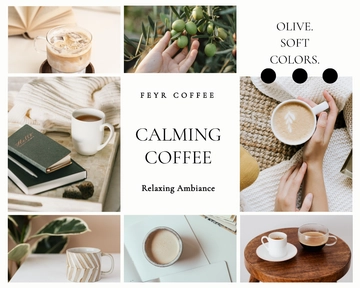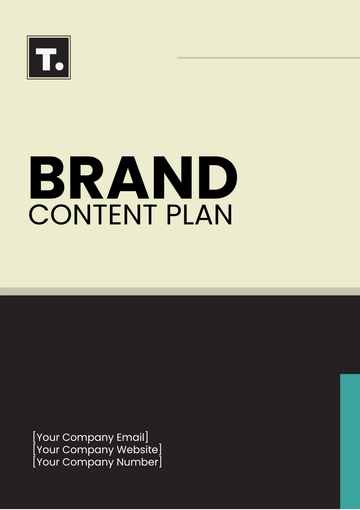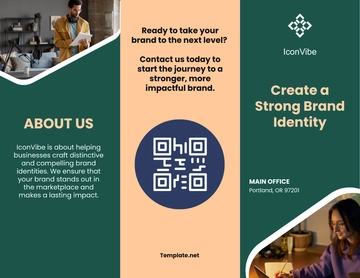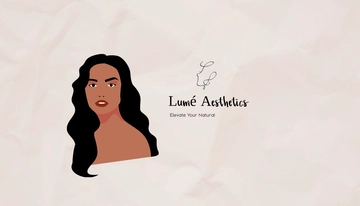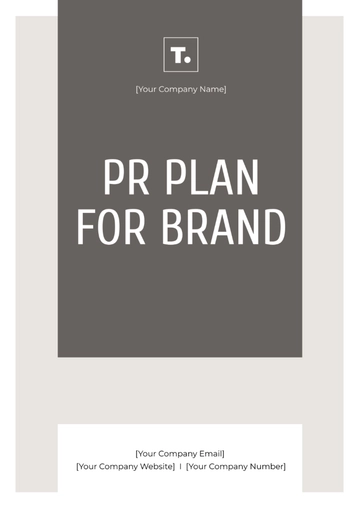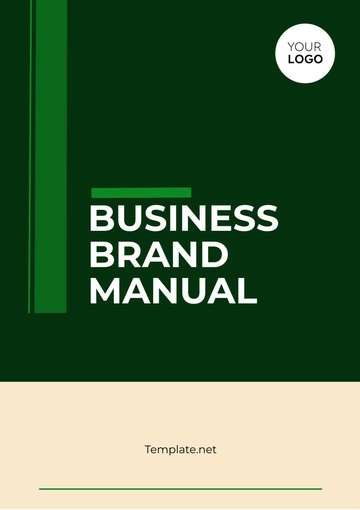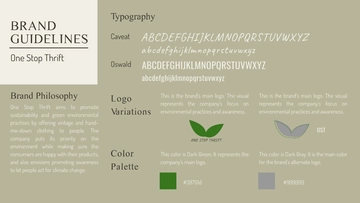Free Marketing Visual Branding SOP
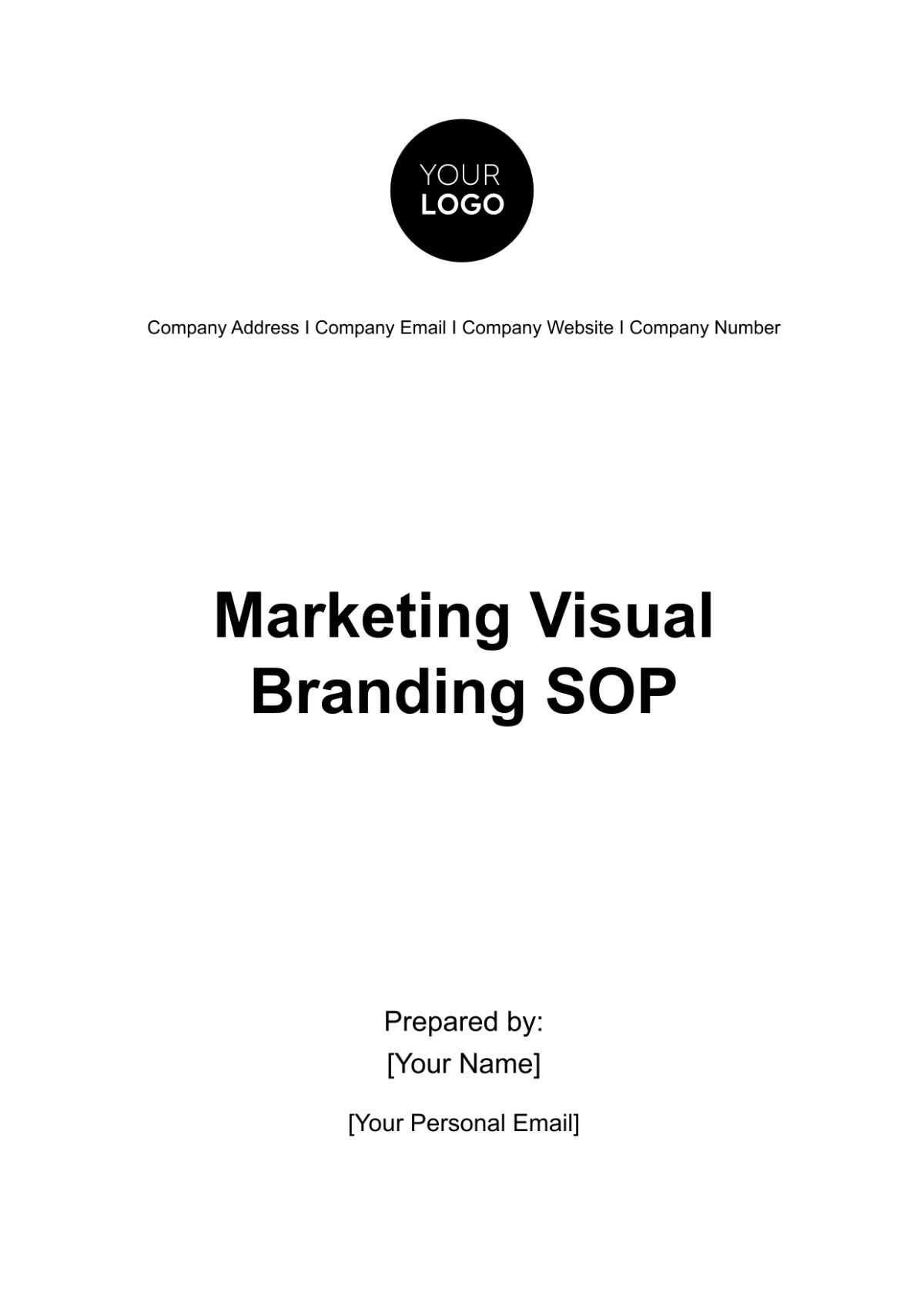
1. Purpose and Scope
The purpose of this document is to provide guidelines and standard procedures for maintaining and implementing visual branding elements within [Your Company Name]'s marketing department or organization. It encompasses all aspects of visual branding to ensure consistency and professionalism in our marketing materials across all channels.
1.1 Scope
This Marketing Visual Branding SOP comprehensively covers the following essential components of our visual branding strategy:
Logo Usage: Guidelines on the correct and consistent usage of [Your Company Name]'s logo in various contexts.
Color Palette: Defined primary and secondary colors that represent our brand, ensuring consistency across all materials.
Typography: Specifications for font choices, sizes, and styles to maintain a unified and professional text appearance.
Imagery: Guidance on selecting and incorporating images that align with our brand's aesthetics and values.
Design Elements: Recommendations for icons, patterns, textures, or other design elements that contribute to our brand's visual identity.
Layout and Templates: Access to pre-designed templates for marketing materials, promoting brand consistency and efficiency.
Digital Assets: Instructions for preserving our visual identity on digital platforms, including websites and email marketing.
Print Materials: Standards for designing and producing printed materials such as business cards, letterheads, and brochures.
Signage and Displays: Guidance on maintaining brand integrity in physical signage and displays, both in-store and at events.
Approval Process: Procedures for obtaining approval for marketing materials to ensure alignment with our brand identity.
Enforcement and Compliance: The importance of adhering to these guidelines and potential consequences for non-compliance.
Version Control: Information on how to access the most up-to-date version of this SOP to ensure continued alignment with brand standards.
References: Quick references to other relevant resources such as the Brand Style Guide and supplementary SOPs.
Appendices: Additional resources, examples, or tools to further assist marketing professionals in implementing the visual branding guidelines.
2. Logo Usage
2.1 [Your Company Name] Logo
[Your Company Name]'s logo is a critical element of our visual identity. It must be used consistently and correctly in all marketing materials.
Variation | Usage | Clear Space | Size (Minimum) |
Color | General Use | 1x the logo height | 1 inch (w) for print, 100px for digital |
Black & White | Grayscale/Print | 1x the logo height | 1 inch (w) for print, 100px for digital |
Monochrome | Limited Space | 1x the logo height | 1 inch (w) for print, 100px for digital |
Inverse (White) | Dark Backgrounds | 1x the logo height | 1 inch (w) for print, 100px for digital |
2.2 Logo Usage Guidelines
Always maintain a clear space around the logo as specified.
Do not alter the proportions or aspect ratio of the logo.
Use the approved logo files provided in the marketing folder.
3. Color Palette
3.1 Primary Colors
Our primary brand colors are as follows:
Primary Color 1: #FF5733
Primary Color 2: #0072BB
3.2 Secondary Colors
In addition to our primary colors, we use the following secondary colors for accents:
Secondary Color 1: #6A5ACD
Secondary Color 2: #FFD700
3.3 Color Usage Guidelines
Use the specified color codes in all marketing materials to ensure brand consistency.
Maintain color consistency across print and digital media to strengthen our brand identity.
Use primary colors for headlines to make them visually prominent and use secondary colors for accents to add visual interest to the content.
4. Typography
4.1 Font Selection
We use the following fonts for our marketing materials:
Headlines: Arial Bold
Body Text: Times New Roman
4.2 Typography Guidelines
Use the specified fonts for all marketing content to maintain a unified brand appearance.
Maintain font size consistency for readability; headlines should be no smaller than 18pt, and body text should be no smaller than 12pt.
Avoid using decorative fonts in official materials to uphold a professional and cohesive brand image.
5. Imagery
5.1 Image Selection
When selecting images for marketing materials, follow these guidelines:
Choose high-resolution images (at least 300dpi for print).
Ensure images align with our brand's style and values.
Use authentic and relevant imagery.
5.2 Image Usage Guidelines
Edit images to match our color palette if necessary.
Avoid overusing stock photos; prioritize original or custom visuals.
Ensure images are appropriately credited when necessary.
6. Design Elements
6.1 Icons
Icons play a pivotal role in conveying messages concisely and aligning with our brand's visual identity. When using icons in marketing materials, it is crucial to adhere to our brand's style guide. This entails selecting icons that reflect our brand's values, maintaining a consistent design style, and ensuring that they complement the overall look and feel of our materials.
6.2 Patterns and Textures
Patterns and textures can add depth and personality to our marketing materials when used thoughtfully. However, it is essential to ensure that any patterns or textures we incorporate align seamlessly with our visual branding. These elements should not overshadow our core brand identity but should rather enhance it. When utilizing patterns or textures, consider how they can contribute to a cohesive and visually appealing brand experience.
7. Layout and Templates
We understand the importance of brand consistency across all our marketing collateral. To streamline this process and maintain a unified brand image, we offer a range of templates for various marketing materials. These templates are thoughtfully designed to adhere to our brand guidelines and ensure that every piece of content we produce is instantly recognizable as [Your Company Name].
Our templates cover a variety of materials, including:
Brochures: Ideal for presenting detailed information about our products or services.
Flyers: Perfect for quick, eye-catching promotions and announcements.
Social Media Posts: Ensuring our online presence aligns with our brand's visual identity.
Presentations: Maintaining a professional and consistent look in all our slides.
Access these templates conveniently in the marketing folder, ensuring that your marketing materials always reflect our brand's visual identity and messaging strategy.
8. Digital Assets
8.1 Website
Our website serves as a significant touchpoint for our audience, making it crucial to maintain our brand's visual identity consistently. To achieve this, we must follow the web design guidelines outlined in the web development SOP. These guidelines encompass everything from color schemes and typography to the placement of our logo and the overall layout of our web pages. Ensuring that our website aligns with our brand is essential for creating a seamless and memorable online experience for our visitors.
8.2 Email Marketing
Email marketing is a powerful tool for connecting with our audience. To maintain a professional and brand-consistent appearance in our email communications, we provide branded email templates. These templates make it easy for our marketing team to create visually appealing and on-brand email campaigns. Utilizing these templates ensures that our messaging remains consistent across all customer touchpoints.
9. Print Materials
9.1 Business Cards
Business cards are a tangible representation of our brand that often leaves a lasting impression. To maintain consistent branding, we've developed a business card template. By following this template, you'll ensure that every business card represents [Your Company Name] accurately and professionally.
9.2 Letterheads
In our written communications, the use of official letterhead reinforces our brand's professionalism. To uphold a consistent brand image, we provide an official letterhead template. By utilizing this template for all written materials, you guarantee that our brand identity is consistently conveyed in every communication.
10. Signage and Displays
For physical signage and displays, it is imperative to maintain brand consistency to create a cohesive brand experience for our customers. This includes adhering to branding guidelines for logos, fonts, and colors. To delve deeper into these guidelines and ensure that our signage and displays align with our visual identity, consult the Signage and Displays SOP. This comprehensive document provides specific guidance on creating impactful physical brand representations.
11. Approval Process
To maintain the integrity of our brand and ensure consistent messaging, all marketing materials must be approved by the Marketing Manager before publication or distribution. Submit materials for review at least 10 business days before the intended release date.
12. Enforcement and Compliance
Compliance with our visual branding guidelines is not optional; it is mandatory for all marketing professionals within [Your Company Name]. Failure to adhere to these guidelines may result in consequences ranging from additional review and revisions to temporary suspension from participating in branding-related projects.
13. Version Control
Our brand and its visual identity may evolve over time. To stay aligned with the most up-to-date branding guidelines, always use the latest version of this SOP. You can find the most recent version in the document repository, where all updates and revisions are logged.
By using the latest version, you ensure that your marketing efforts are in sync with our current branding strategy. Regularly checking for updates is a proactive measure to maintain brand consistency and relevance.
14. References
For additional guidance on implementing our visual branding guidelines, please refer to the following resources:
Brand Style Guide: A comprehensive document that outlines our brand's visual and messaging guidelines in detail.
Marketing Folder: A repository of essential marketing assets, including templates, images, and design elements.
Web Development SOP: Detailed guidelines for maintaining our brand's visual identity on our website, ensuring a consistent online presence.
Signage and Displays SOP: In-depth guidance on adhering to branding guidelines for physical signage and displays.
15. Appendices
In the appendices, you will find additional resources and examples that provide further clarification and assistance regarding our visual branding. These resources are designed to support marketing professionals in their efforts to create consistent and impactful marketing materials. Explore the appendices to enhance your understanding and application of our brand's visual identity.
Marketing Templates @ Template.net
- 100% Customizable, free editor
- Access 1 Million+ Templates, photo’s & graphics
- Download or share as a template
- Click and replace photos, graphics, text, backgrounds
- Resize, crop, AI write & more
- Access advanced editor
Elevate your brand's visual identity effortlessly with Template.net's Marketing Visual Branding SOP Template. This editable and customizable resource is designed to streamline your branding processes. Craft stunning visuals tailored to your brand's personality with ease, all within our user-friendly Ai Editor Tool. Unlock your brand's full potential today!


